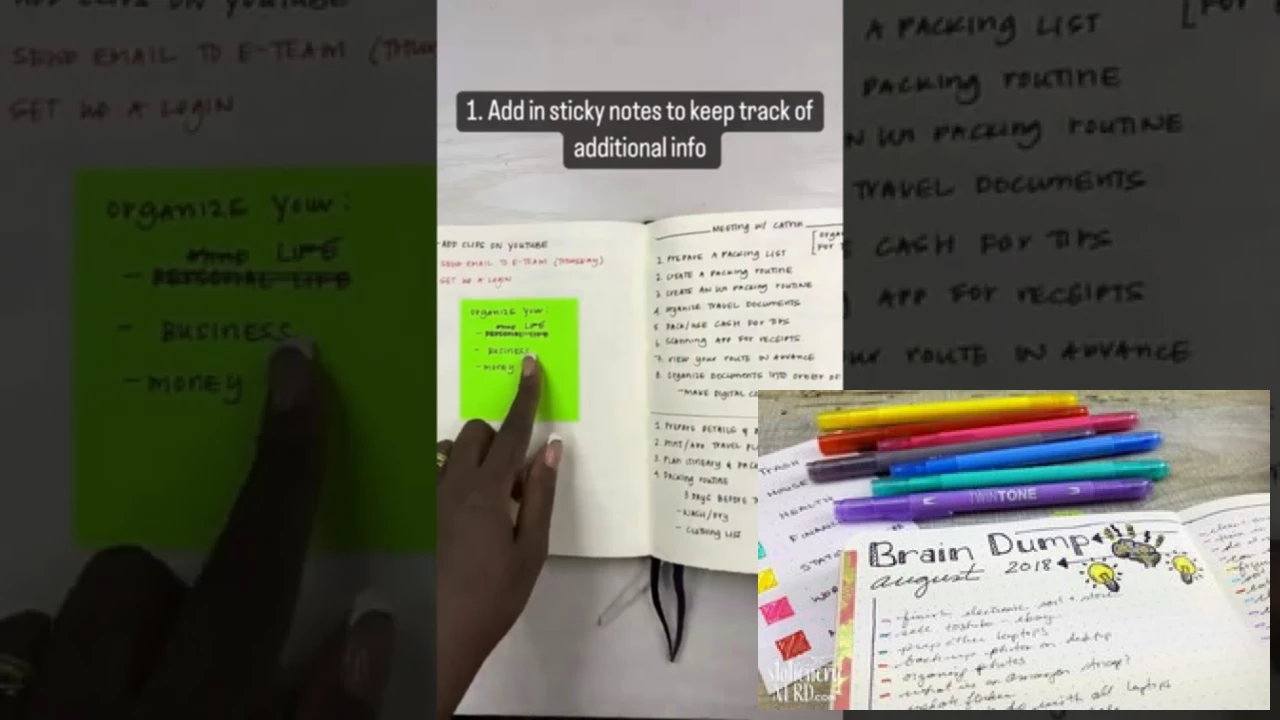Did you know that the average person has over 60,000 thoughts per day? This constant mental chatter can be overwhelming, leading to stress and decreased productivity. Learning how to effectively organize your thoughts can unlock a world of mental clarity and focus.
Many people find that simply writing down their thoughts—a process known as "brain dumping"—provides significant relief. But simply writing isn't enough. You need a system! This article will explore practical strategies and techniques to help you declutter your mind on paper and achieve peak mental clarity through handwritten notes. What better way to tame the chaos than by employing the power of pen and paper?
Here are three key steps to effectively organize your thoughts in a notebook:
- Brain Dump: Start by writing down *everything* on your mind. Don't edit, just let it flow.
- Categorize: Once you've dumped everything, review your notes and group similar thoughts or ideas together.
- Prioritize: Identify the most important items and create actionable steps for each.
Different Note-Taking Methods for Mental Clarity
The right note-taking method can dramatically impact your ability to organize thoughts. Let's compare two popular methods: mind mapping and the Cornell Note-Taking System. Which one will work best for *you*?
While both aim for clarity, they approach it differently. Mind mapping fosters creativity through visual connections, while the Cornell system emphasizes concise summarization and active recall. Choosing the right method depends on your learning style and the nature of the information you're processing.
Benefits of Handwritten Notes for Focus
Contrary to popular belief, studies show that handwritten notes actually improve learning and retention. This is because the physical act of writing engages different parts of the brain, leading to deeper processing of information. Furthermore, the slower pace of handwriting allows for more thoughtful consideration of the ideas being recorded. How can we leverage these benefits to achieve mental clarity?
| Method | Pros | Cons |
|---|---|---|
| Mind Mapping | Visual, creative, promotes connections | Can be time-consuming for detailed notes |
| Cornell Notes | Organized, efficient, good for summarizing | Less flexible for brainstorming |
Overcoming Mental Clutter with a Notebook
The act of transferring thoughts from your mind to paper is incredibly liberating. It's like decluttering your mental space, creating room for new ideas and improved focus. This simple act has profound effects on stress levels and productivity.
Remember, consistency is key. Make it a daily habit to dedicate even just 15 minutes to brain dumping and organizing your thoughts. Over time, you'll notice a significant improvement in your mental clarity and overall well-being.
Many find the process of transferring chaotic thoughts to the structured format of a notebook incredibly therapeutic. It's a tangible way to wrestle your thoughts into submission.
Furthermore, the ability to physically review your notes provides a sense of accomplishment and control, further enhancing mental clarity.
"The key is not to prioritize what's on your schedule, but to schedule your priorities." - Stephen Covey
Practical Tips for Notebook Organization
To maximize the effectiveness of your notebook, consider using different colored pens for different categories of thoughts. Experiment with different layouts and methods until you find what best suits your personal style.
FAQ
- Q: What type of notebook is best? A: Any notebook that you find comfortable to write in will work. Consider dotted grid or lined paper.
- Q: How often should I brain dump? A: Aim for at least once a day, even if it's just for a few minutes.
- Q: What if I don't know where to start? A: Just start writing! Don't worry about making it perfect.
- Q: Can this help with anxiety? A: Yes, many find this process helps reduce anxiety by clearing their mental space.
- Q: What if I forget my notebook? A: Keep a digital note-taking app as a backup.

